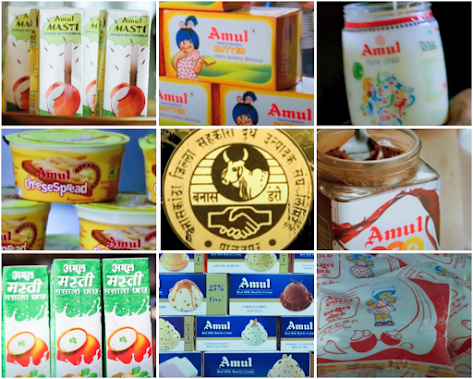Rice is the world's most vital food crop, eaten and grown across the world with 90% of rice production and consumption occurring in Asia. Asia continent is at the guts of the worldwide rice sector. Here everyone eats around 80kg of rice per annum, In some countries like Bangladesh, Cambodia, and Laos this number can double rising to 160kg per year. With people's lives so intertwined with rice, it can't be denied that in Asia rice is life. For Asians, rice doesn't just represent sustenance. In almost every country on the continent, this staple food is of great cultural, historical, and political significance, a shared reality that brings together all Asian Nations. Quit that rice unites Asia as the backbone of its economic development, food security, and political stability. The leading countries supported milled rice production in 2018/19: China is in first place with 148.5 million metric tons and India stood in second place with 116.42 million metric tons.
In India, about five million hectares of agricultural within the rice belt of eastern India are susceptible to flooding, and typically, the rice plant dies within days of total submergence. In 2017 stretches of rich farmlands were rendered barren thanks to flooding caused by the Kosi River within the Madhubani region of North Bihar. Rice farmers of the Odisha region were also very stressed crucial. There was always demand in crucial conditions like paying for his or her children's education, marriage, and building a replacement house. More importantly, it covers their daily needs and savings for a longer time. Their area is usually flooded. Every 2-3 years there was a flood and their paddy fields were totally submerged. The sector was flooded for 10-15 days and therefore the entire crop was destroyed. Sometimes they do not even get straw for his or her cattle. To survive farmers need to borrow from friends, relatives, and money lenders and hope they will repay them from the subsequent crops.
NRRI ( National Rice Research Institute) found that the eastern areas of India were typically chronically flood-prone areas, and therefore the farmers said that nearly whenever there was a flood all their rice varieties were completely lost, they lost the entire crop that they were considered during a need of variety which may stand submergence and in flood. That's why the researcher tried to create a sort of variety that will grow in these flood-prone areas to unravel the issue of the farmers. NRRI teamed up with the International Rice Research Institute to make 'Swarna Sub -1' a submergence-tolerant variety. The institute uses a marker-assisted selection to develop stress-tolerant rice varieties.

In 2018, the Researcher visited various villages in Odisha with a proposal. They advised the farmers to undertake a replacement variety that will survive a flood. Firstly nobody believed in Research's words. Accordingly, to the farmers, there is no way any variety could sustain a flood. But Scientists pervaded farmers to plant a minimum of a little patch. Some farmers were reluctant to simply accept some quantity of seed and plant it. In 2018, That year flood came and covered the farmer's field. All the opposite varieties planted by everyone were severely damaged, But the tiny patch of Swarna seeds survived and still had an honest yield. It opened the eyes of each farmer and had an enormous impact on them. Farmers from that village and other nearby farmers are also motivated to shop for that magic variety. Everyone was astonished and happy. Suddenly there was an important demand for that magic variety seed. Every farmer follows the submerged stress-tolerant variety ' The Swarna sub 1' and gets a yield. From that year on, this variety became popular amongst the farmers. Even after 15 days of being flooded, they were still getting an honest yield from this rice.
Since farmers started planting Swarna sub -1 there are becoming better results from their fields. Now they will provide sufficient food for their family. The additional paddy they will sell within the market and use that cash to shop for vegetables and new clothes. This was only possible when a farmer started cultivating the Swarna sub-1 sort of rice.Swarna-Sub1 is that the flood-tolerant version of the favored mega-variety Swarna (MTU 7029) in eastern India. It was developed by scientists from the International Rice Research Institute (IRRI), evaluated and released in India by the Central Rice Research Institute (CRRI), and disseminated by IRRI alongside the national agricultural research systems, government organizations, non-government organizations, and public and personal seed companies in India. Within the eastern state of Odisha, where Swarna occupies quite 30% of the entire rice area, both the state and central government are distributing Swarna-Sub1 seeds through various schemes just like the BGREI ( National Food Security Mission and Bringing Green Revolution to Eastern India )
Swarna-Sub1 is nearly a touch nearly bit like counterpart Swarna in terms of grain yield and grain quality, but it's another advantage—it can survive complete submergence for quite 2 weeks. However, the husk color of Swarna-Sub1 is way lighter than that of Swarna, which is reddish. Due to this difference, the farmers in Odisha call Swarna “Nali Swarna” (Red Swarna) and Swarna-Sub1 “Dhala Swarna” (White Swarna)
STRASA(Stress Tolerant Rice for Africa and South Asia) and IRRI are finding more innovative ways to grow rice and communicate new technologies to farmers such as providing rice production advice via mobile phone apps, with the potential out-of-unproductive fields and out of the trap of rising prices. Rice research is an essential part of the future of Asia and the world.





Comments
Post a Comment